Football
AFC Asian Cup: India vs Australia - Tactical Analysis
The Blue Tigers succumbed to a 2-0 defeat against Australia despite a spirited performance in the first half of the AFC Asian Cup 2023. Here's the tactical breakdown of the game.
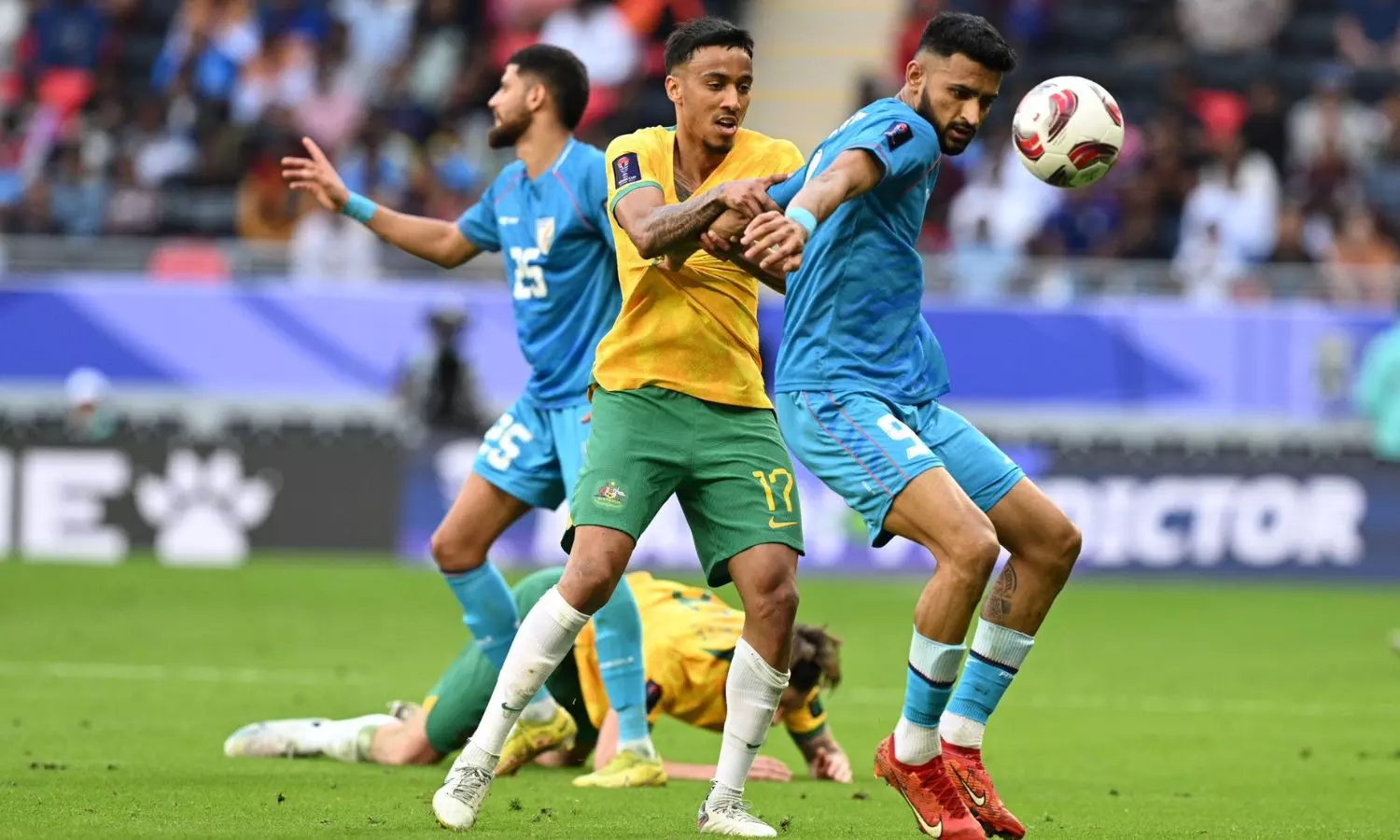
India vs Australia at AFC Asian Cup 2023 (Source: Indian Football Team)
It's often said that hope can be a double-edged sword, and last week's match between India and Australia in football perfectly illustrates that notion. Despite the Indian players giving a brilliant account of themselves and defending their goal with warrior-like determination, the Socceroos ultimately proved superior.
Australia's lineup didn't spring any surprises, featuring the anticipated set of players. The only noteworthy addition was the comeback of captain and goalkeeper Mathew Ryan, who had recuperated from a facial bone fracture sustained in December, reclaiming his position between the goalposts.
India's lineup featured a combination of anticipated and unexpected call-ups. One of the ones that caught everyone's eye was Deepak Tangri, who was set to have a baptism by fire - National Team debut for the Blue Tigers at the continental stage against one of the best of Asian football.
Well, probably to create variation from the cricket World Cup finals, India won the toss this time and gave the first possession to Australia, the first of many times that India lost possession of the ball (not that it matters).
As expected, the game kicked off, and Australia tried to stake their upper hand in play as soon as possible. Dominating possession, the Socceroos built up from the back in a 2-3-5 structure when in possession, by inverting both their full-backs, G. Jones and A. Behich, to form the three in midfield along with Keanu Baccus acting as the central pivot.
This allowed J. Irvine to maraud forward, playing in a more box-to-box, attacking role without having to be highly involved in the build-up. Boyle and Goodwin held the width on the right and left flanks, respectively, allowing C. Metcalfe and Irvine to support their attacking play inside the box. However, Irvine and Goodwin did often exchange positions, granting Goodwin the freedom to function in the left half-spaces as well.
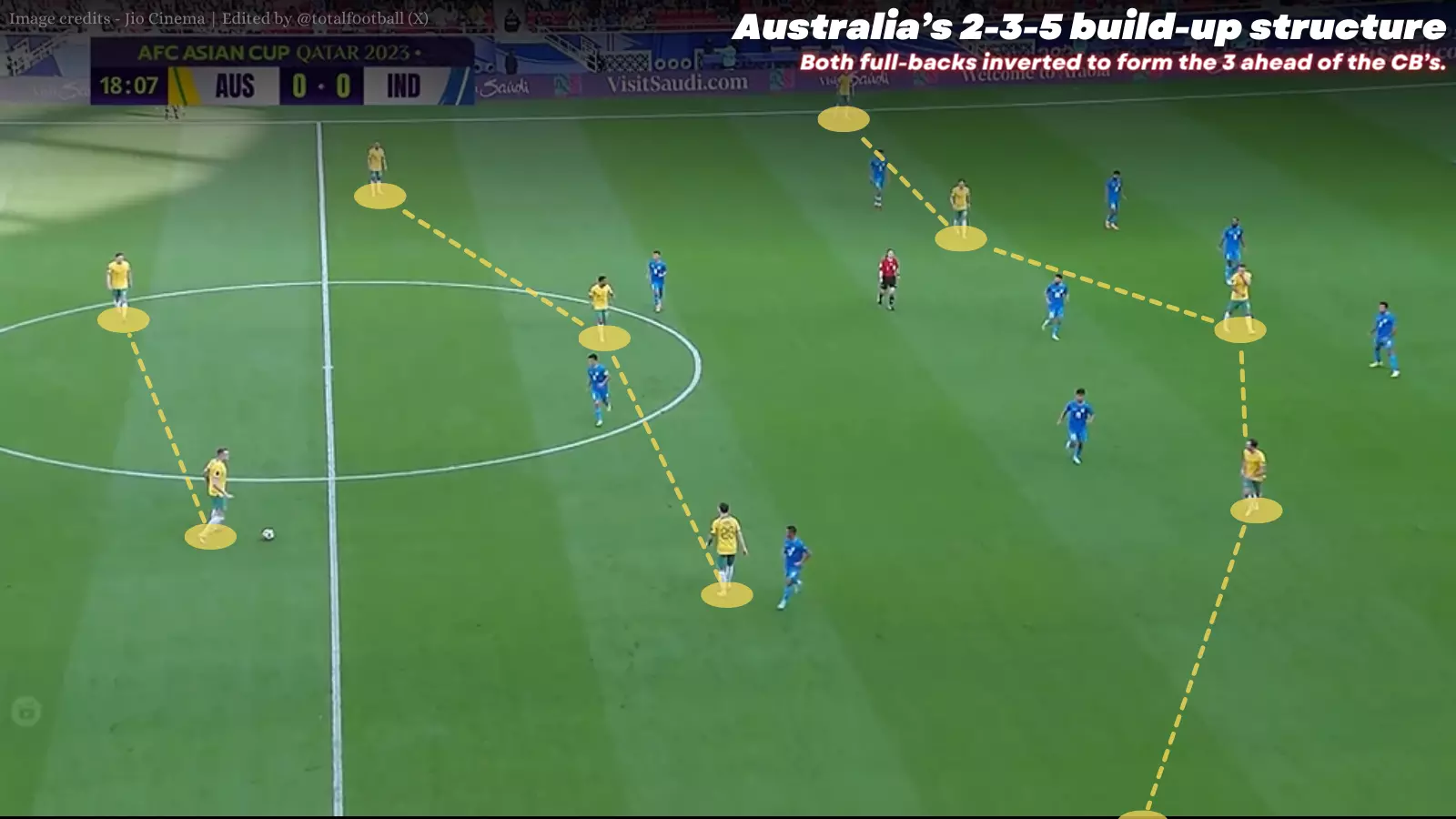
India's counter to this was by having an impermeable 4-4-2 low-block. Even though Australia had more of the ball, and moved it around pretty well; the play was static overall and as a result, it failed to move and create gaps in India's block. With little to no space given in between the lines, the only consistent path the Socceroos had was to play out wide and cross back in, hoping it meets an Australian head.
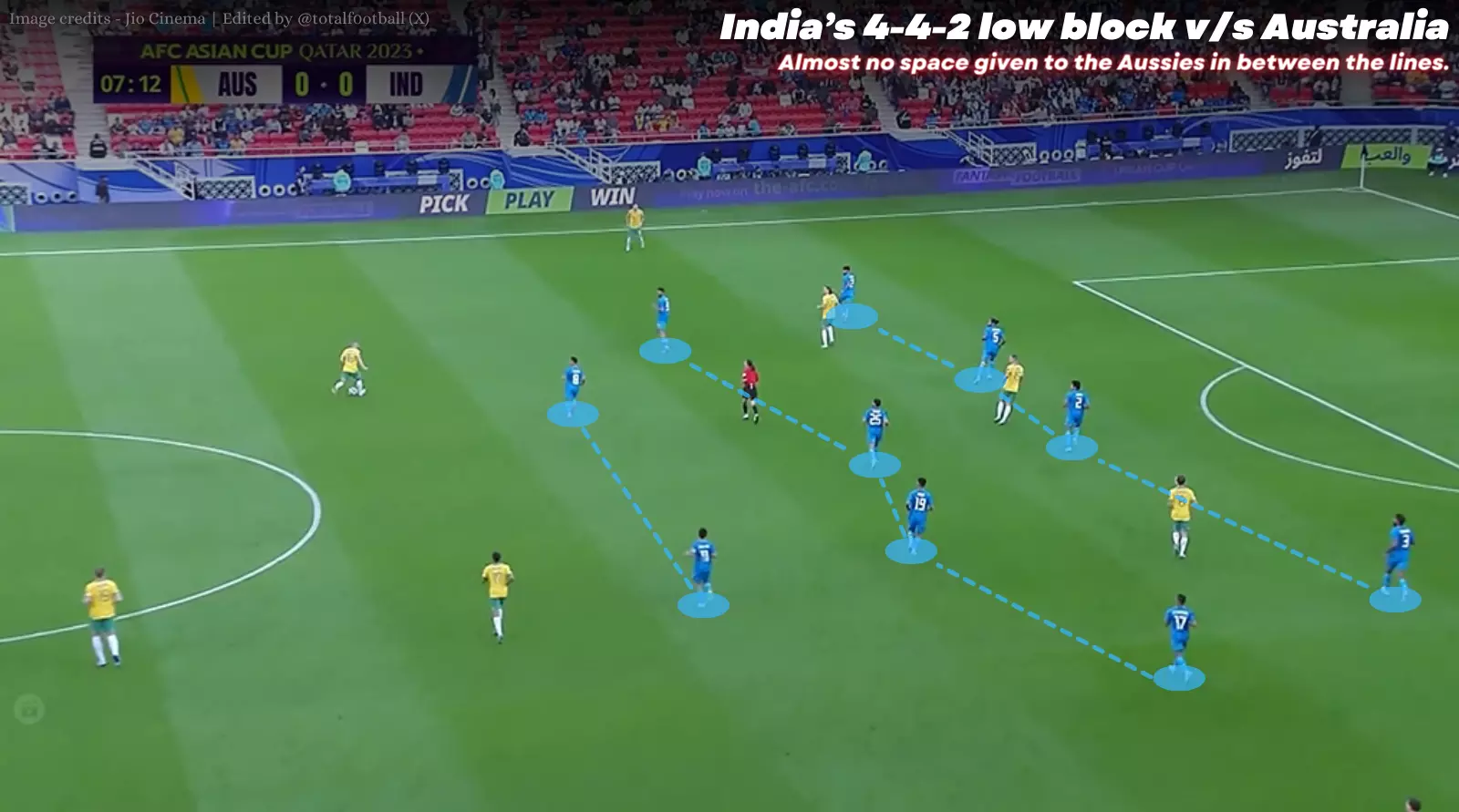
Aussie coach Graham Arnold said in his post-match press conference that the excitement of playing the tournament might have had an effect on their composure in the first half. Add to it the frustration of not having scored in 14 shots through the first half, which meant the Socceroos controlled the ball but failed to get anything meaningful at India's goal.
In fact, the best chance of the half arguably even fell India's way when a looping cross by Nikhil Poojary was misread by Harry Souttar, allowing a sneaky Sunil Chhetri to have a header at goal, who narrowly missed the target.
That Sunil Chhetri header was India's only touch of the ball inside the Aussie box, and it had a lot to do with how the 2015 champions defended. Attacking Australia was always going to be an uphill battle, and it proved to be an almost impossible one.
Through 90 minutes of play, the Blue Tigers managed just four open-play passes into the Australian defensive third. India struggled to get out of their own defensive third when building up as the Socceroos pressed and counter-pressed brilliantly, exerting their physical advantages into every duel, winning a majority of the second balls in midfield.
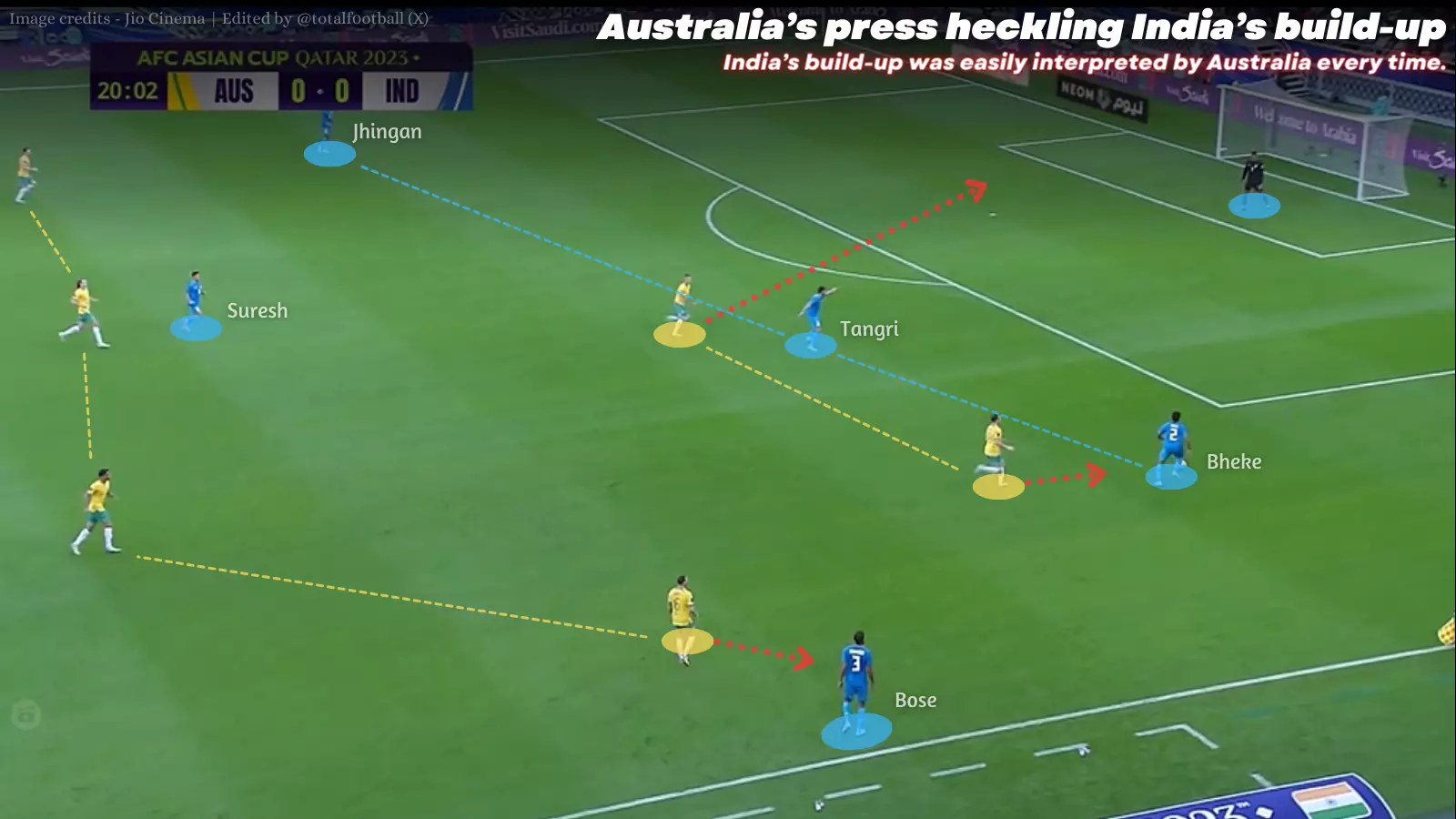
The Australian press often suffocated India. It even led to arguably their best chance of the first half, as the pressure and lack of positional awareness almost got India into conceding position when Gurpreet's meek clearance found the yellow and greens.
Their press aimed to make India go long, for Australia to recover the second balls more easily. On this occasion, it almost got them a goal. The wingers and strikers of Australia pressured the Indian full-backs as soon as they received and looked to progress.
Their press was well-timed and often executed well, forcing India back and then long in order to relieve the pressure. This can be seen in the high turnovers that the Aussies prompted, as they recovered the ball in India's defensive third 11 times, compared to India's one.
The majority of the turnovers were caused by the wings as well. At the end of a frustrating half for the Aussies and one of immense pride and bravery from India, the teams split at halftime deadlocked at 0-0.
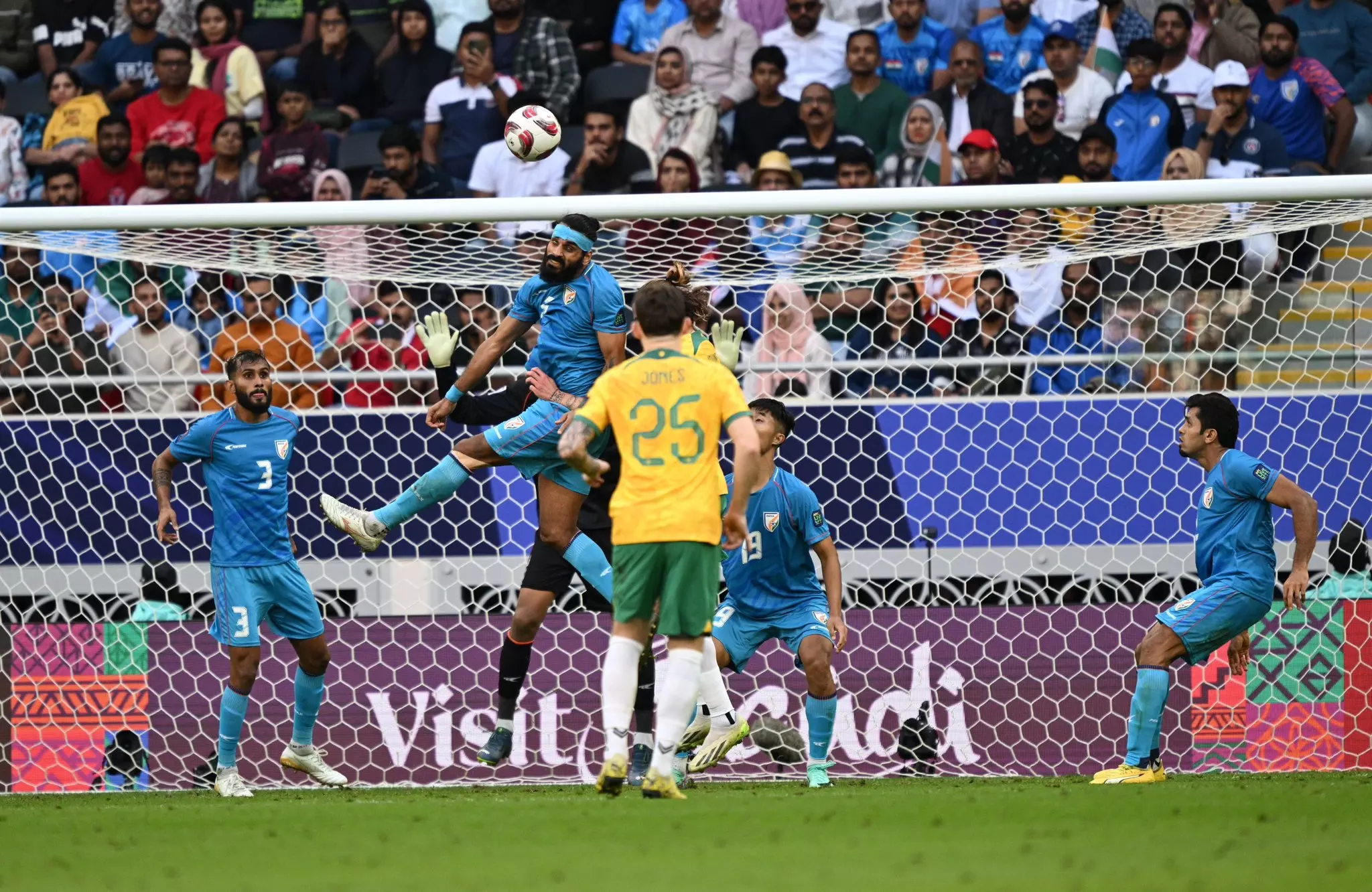
One aspect where India exceeded expectations was in their defending of set-pieces, especially corners. Considering the aerial advantage that the Aussies held, it was crucial that India could nullify them whenever the need arose. And they did.
Australia amassed a total of 14 corners throughout the game (India had none), but the Indian defence stood strong. Whether it was Gurpreet coming out to claim whatever he could or Sandesh throwing his head onto every challenging ball, they ensured that Australia gained nothing from those situations.
Out of the 14 corners they had, 13 were delivered into the box, and only for of them saw an Australian making the first contact. Despite the Australians being tall, the Indian defenders demonstrated that they could stand even taller.
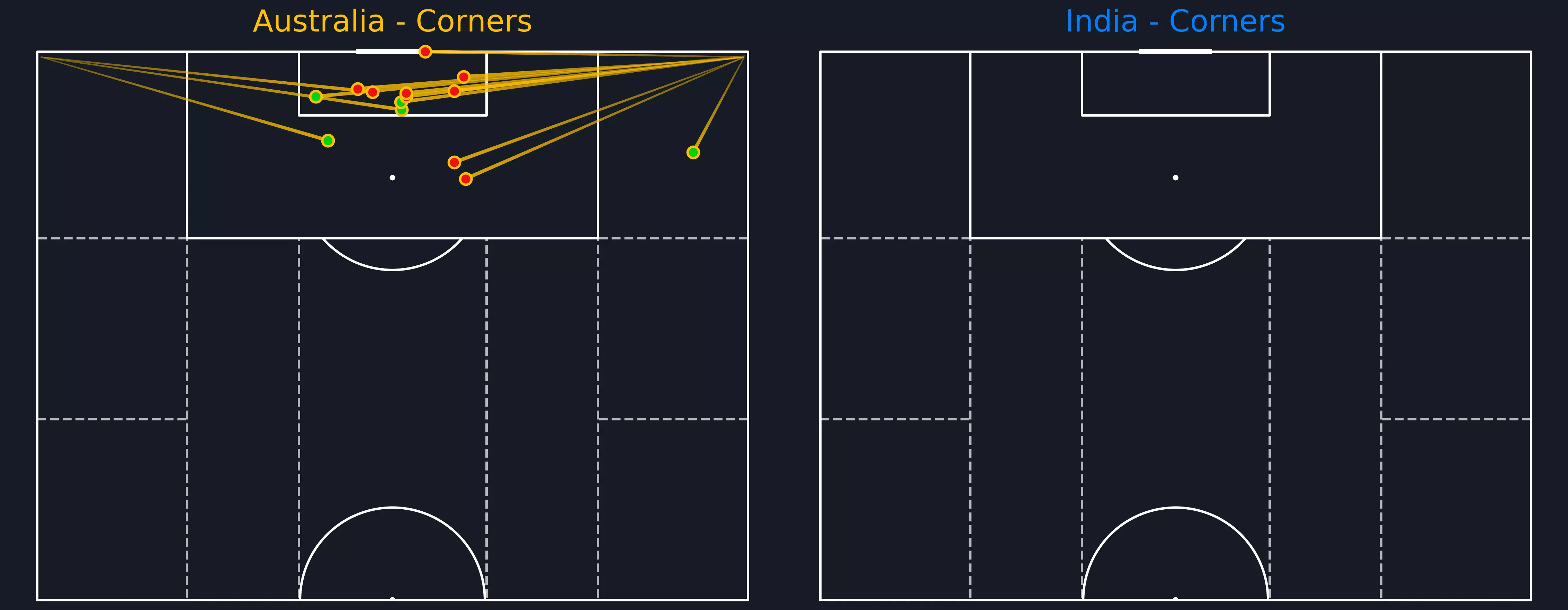
The half-time team talk proved to be vital for the Socceroos. They seemingly came out much more composed and focused and India had another 45 minutes to hang on to. However, eventually, Indian resistance began to fade as they failed to cut off the gaps and Australia started to find their groove. The pace and rhythm in which the Aussies played got better and quicker, in tandem India grew tired and the resoluteness that was there in the first half disappeared.
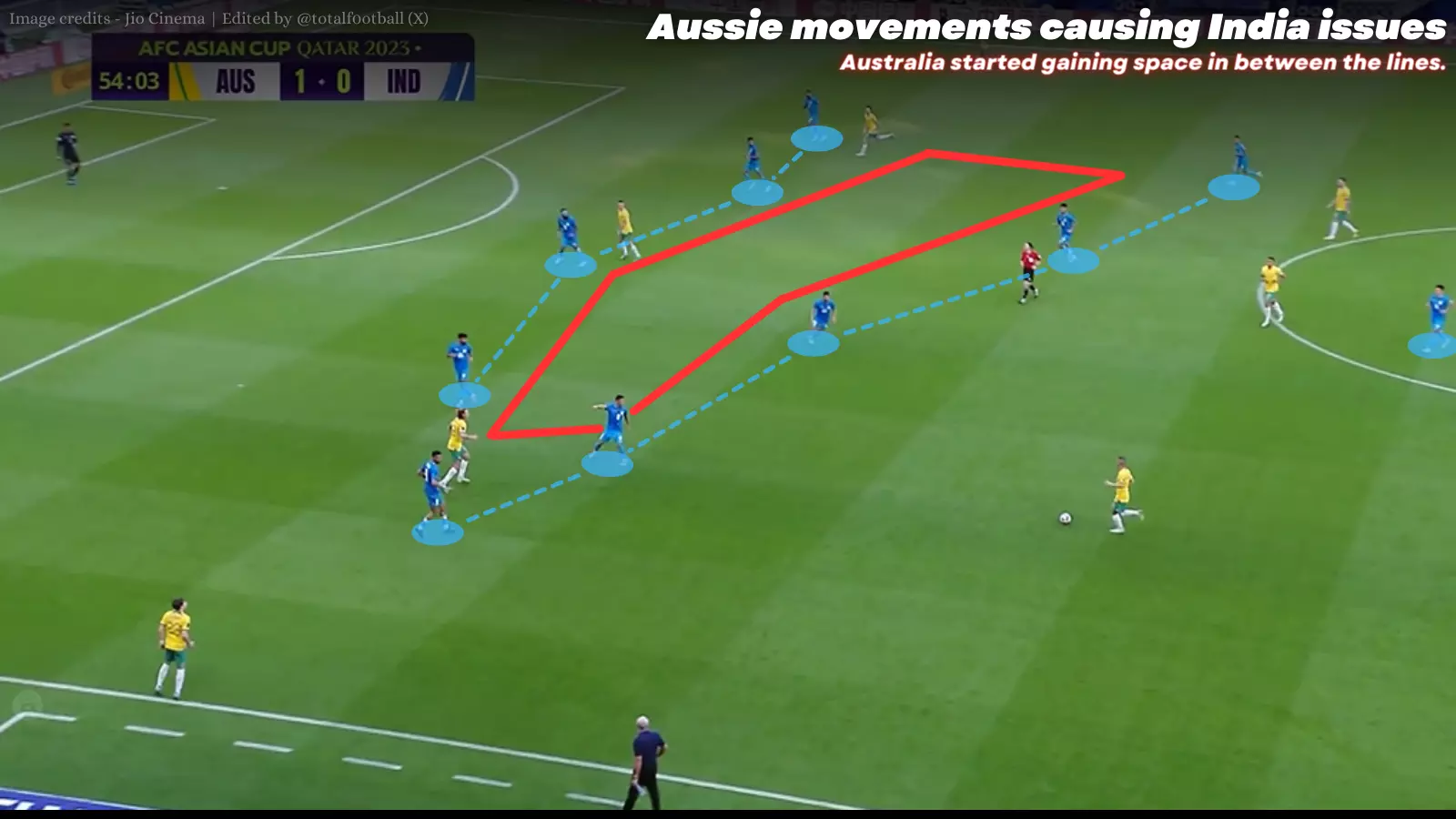
The Aussie movements got better as well. The full-backs began involving out wide more often (especially down India's right), isolating Goodwin with Manvir as Irvine occupied Poojary. Confusions began to appear, gaps began to open up in the Indian box and Australia grew into the game, eventually resulting in the first breakthrough as Gupreet's parry was promptly punished by Irvine.

Shortly afterwards, Graham Arnold started using his reserve weapon - his bench. S. Silvera, R. McGree, Jordan Bos and Bruno Fornaroli all came on in a span of 10 minutes between the 60th and the 70th. And in the 72nd minute, Australia doubled the lead as India's press was caught out from the right, allowing McGree to be released by Silvera, who drove on and found Bos open at the far post. The 20-year-old obliged duly, scoring his first goal for Australia with his first touch of the game.
All of India's substitutions happened after the second goal, and by then, it was already too difficult of a battle to get a result in. Liston, Akash Mishra, Thapa and Mahesh all came on in the final 15 minutes, and Vikram Partap Singh was also handed his National Team debut for the Blue Tigers in the 89th minute.
At the end of it all, it was an expected outcome. The first-half masterclass gave hope, and it faded soon after the game resumed in the second half. The Socceroos are a benchmark for AFC's aspiring nations look to, and so should India. 4-0 in 2011, 2-0 in 2024. There is progress, but it is not simply not enough against the crème de la crème of Asian football.
